Front-load washing machines are fantastic appliances, offering efficient cleaning, energy savings, and gentle care for your clothes. However, like any machine, front-load washer require regular maintenance to stay in top working condition. If you’re looking to extend the life of your front-load washer and keep it performing at its best, this guide is for you. We’ll walk you through easy, DIY maintenance steps that anyone can handle. No technical jargon, just practical advice to help you keep your washer running smoothly.
- Why Your Front-Load Washer Require Maintenance?
- Essential Tools and Supplies For Front-Load Washer Maintenance
- Front-Load Washer Maintenance Steps
- Common Problems and Troubleshooting
- When to Call a Professional?
- Conclusion
Why Your Front-Load Washer Require Maintenance?
Before diving into the how-to, let’s talk about why maintenance is so important. Regular upkeep prevents mold and mildew, reduces odors, ensures efficient operation, and extends the life of your machine. Plus, a well-maintained washer is less likely to break down, saving you from costly repairs or replacements.
Essential Tools and Supplies For Front-Load Washer Maintenance
You don’t need a lot of fancy tools to maintain your front-load washer. Here are the basics:
- White vinegar
- Baking soda
- Microfiber cloths
- Soft-bristle brush
- Toothbrush
- Mild dish soap
- Cleaning rags or old towels
Front-Load Washer Maintenance Steps
Step 1: Clean the Door Seal
The door seal, also known as the gasket, is a prime spot for mold and mildew to grow due to its constant exposure to moisture. Here’s how to clean it effectively:
- Inspect the Seal: Open the washer door and pull back the rubber seal to check for any foreign objects like coins, buttons, or hair.
- Wipe with Vinegar: Dip a cloth in white vinegar and thoroughly wipe around the seal. The vinegar will help kill mold and mildew.
- Scrub with Baking Soda: Sprinkle baking soda on a damp cloth and scrub the seal gently to remove any remaining grime.
- Rinse and Dry: Wipe the seal with a clean, damp cloth to remove any residue. Make sure to dry the seal completely with a dry towel.
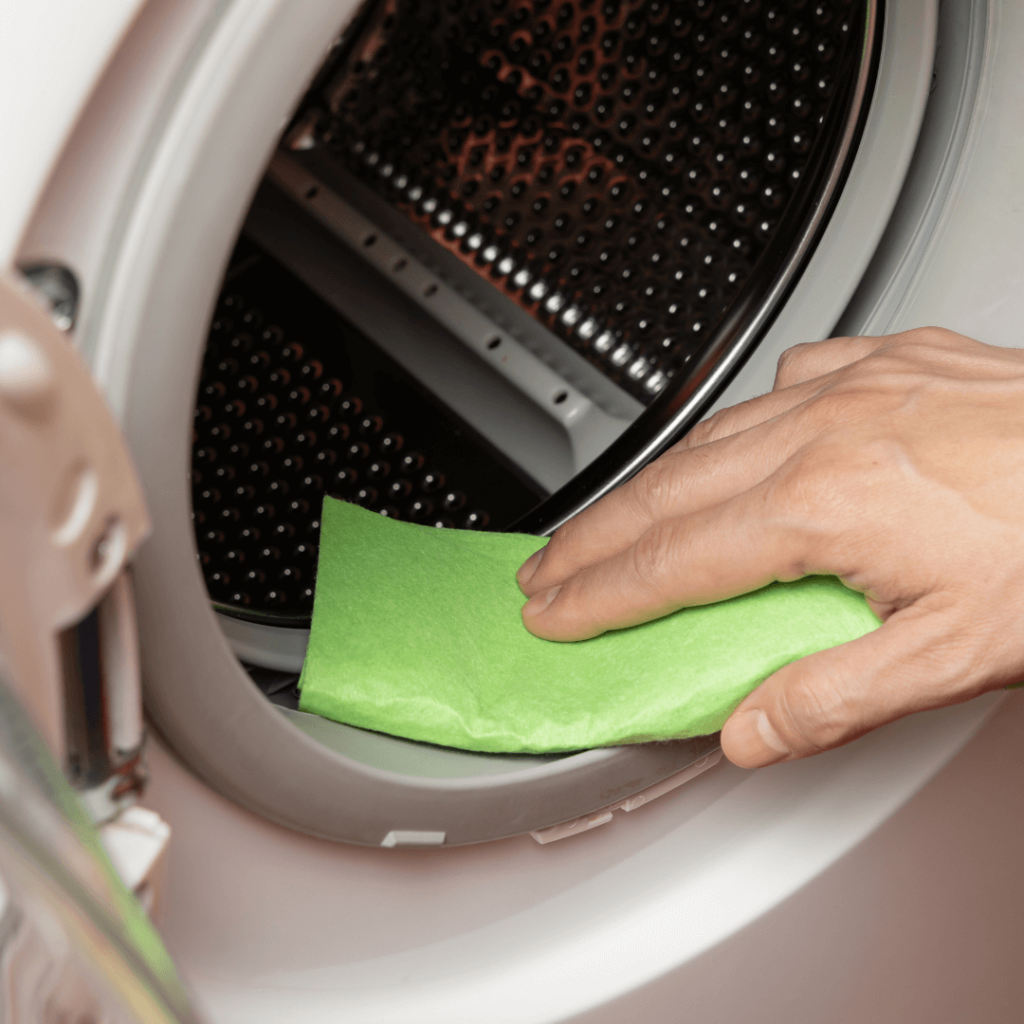
Step 2: Clean the Drum
Keeping the drum clean is essential for maintaining the overall hygiene of your washer. Here’s a simple method to do this:
- Empty the Washer: Ensure there are no clothes left inside.
- Run a Cleaning Cycle: Pour two cups of white vinegar directly into the drum and run a hot water cycle. This will help break down any soap scum and kill bacteria.
- Add Baking Soda: After the vinegar cycle, sprinkle half a cup of baking soda into the drum and run another hot water cycle. Baking soda will help neutralize odors and remove any leftover grime.
- Wipe Down the Drum: Once the cycles are complete, wipe down the inside of the drum with a clean, dry cloth to remove any remaining residue.
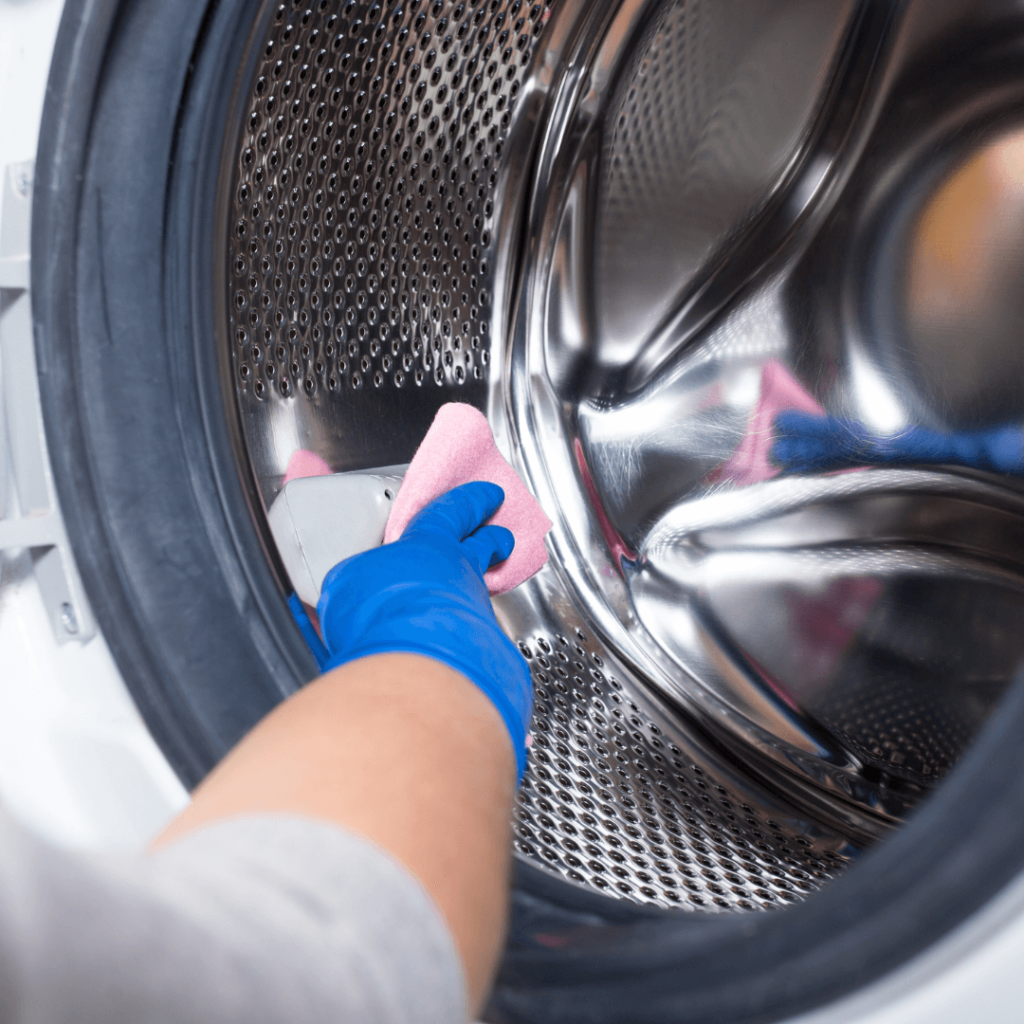
Step 3: Clean the Dispenser Drawers
The detergent and fabric softener dispensers can also accumulate residue over time. Here’s how to keep them clean:
- Remove the Drawers: Pull out the detergent and fabric softener drawers as far as they will go, then lift them out.
- Soak in Warm, Soapy Water: Fill a basin with warm water and a few drops of mild dish soap. Soak the drawers for 10-15 minutes.
- Scrub and Rinse: Use a soft-bristle brush or toothbrush to scrub away any built-up detergent or fabric softener residue. Rinse thoroughly with warm water.
- Dry and Reassemble: Dry the drawers completely with a clean towel before placing them back in the washer.
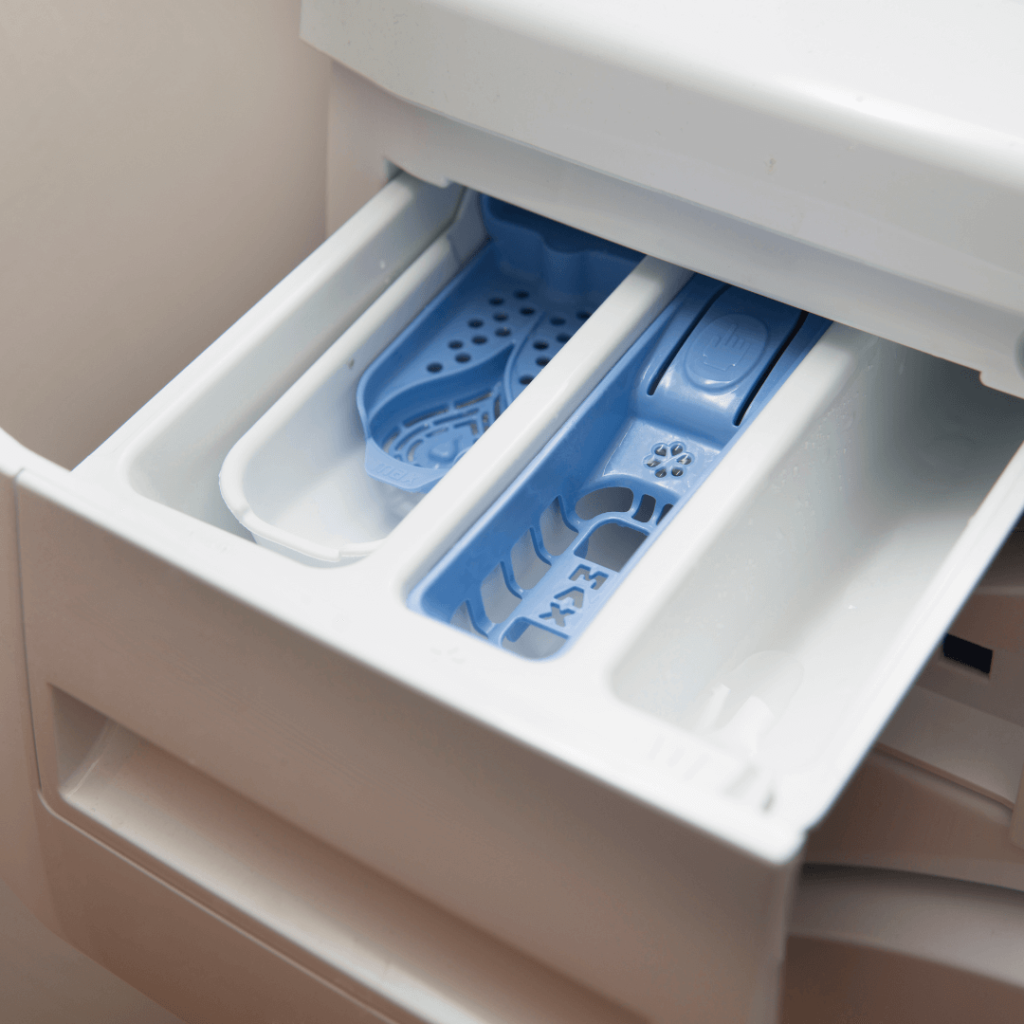
Step 4: Clean the Filter and Drain Pump
Cleaning the filter and drain pump helps prevent blockages and ensures your washer drains properly. Here’s how to do it:
- Locate the Filter: The filter is usually located behind a small door or panel at the bottom front of the washer.
- Prepare for Water: Place a shallow pan or towel under the filter to catch any water that spills out when you remove it.
- Remove and Clean the Filter: Twist the filter counterclockwise to remove it. Rinse it under running water and use a toothbrush to remove any debris. If your washer has a drain pump cover, wipe it clean with a damp cloth.
- Reinstall the Filter: Once the filter is clean, twist it back into place securely.
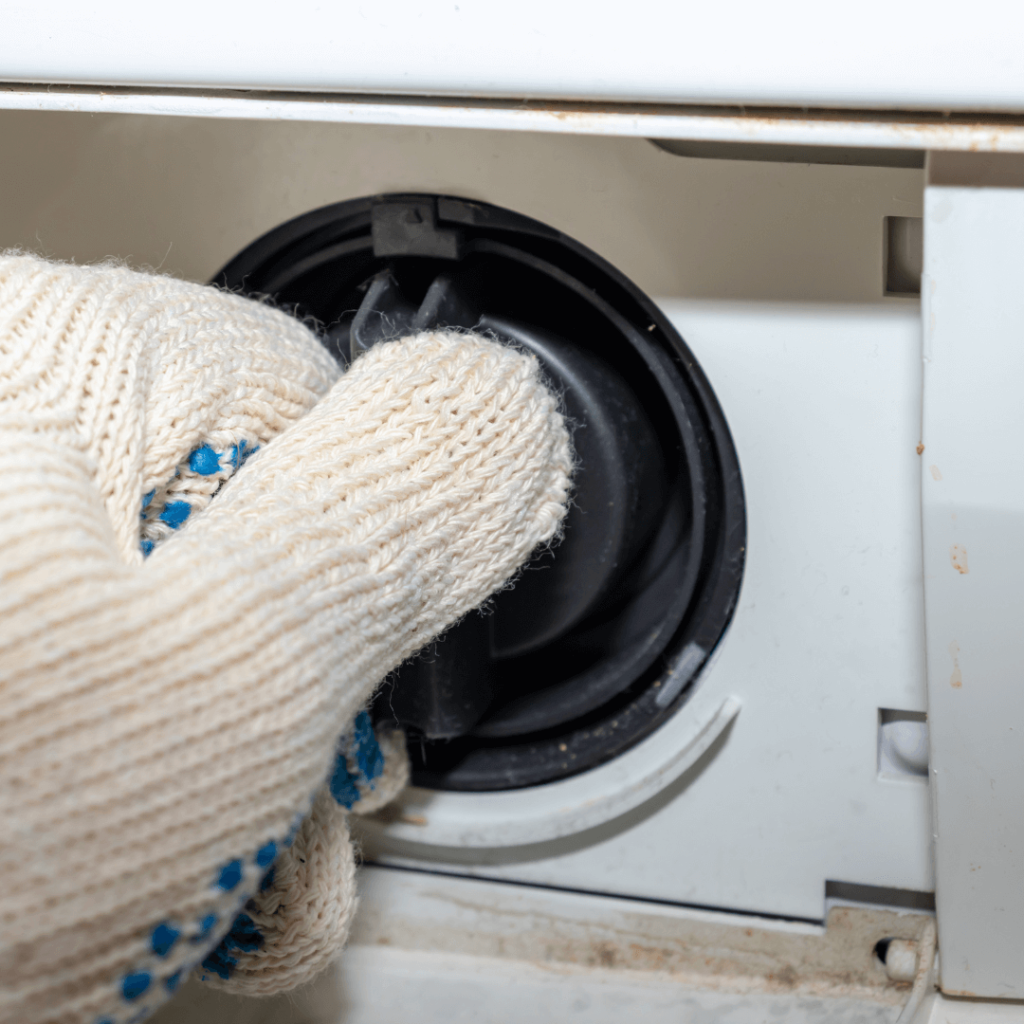
Step 5: Descale Your Washer
Descaling removes mineral buildup caused by hard water. Here’s an easy way to descale your washer:
- Run a Hot Water Cycle: Pour a commercial descaler or two cups of white vinegar into the drum and run a hot water cycle.
- Repeat if Necessary: For heavy mineral buildup, you may need to run the descaling process twice.
- Rinse Cycle: After descaling, run an empty rinse cycle to ensure all residue is flushed out.
Step 6: Maintain the Exterior
Keeping the exterior of your washer clean is just as important as maintaining the interior. Here’s how to do it:
- Wipe Down Surfaces: Use a damp microfiber cloth and mild dish soap to wipe down the exterior surfaces of your washer, including the control panel, door, and sides.
- Avoid Harsh Cleaners: Do not use abrasive cleaners or scouring pads, as they can scratch the surface of your washer.
- Dry Thoroughly: Use a clean, dry cloth to dry the exterior surfaces to prevent streaks and water spots.
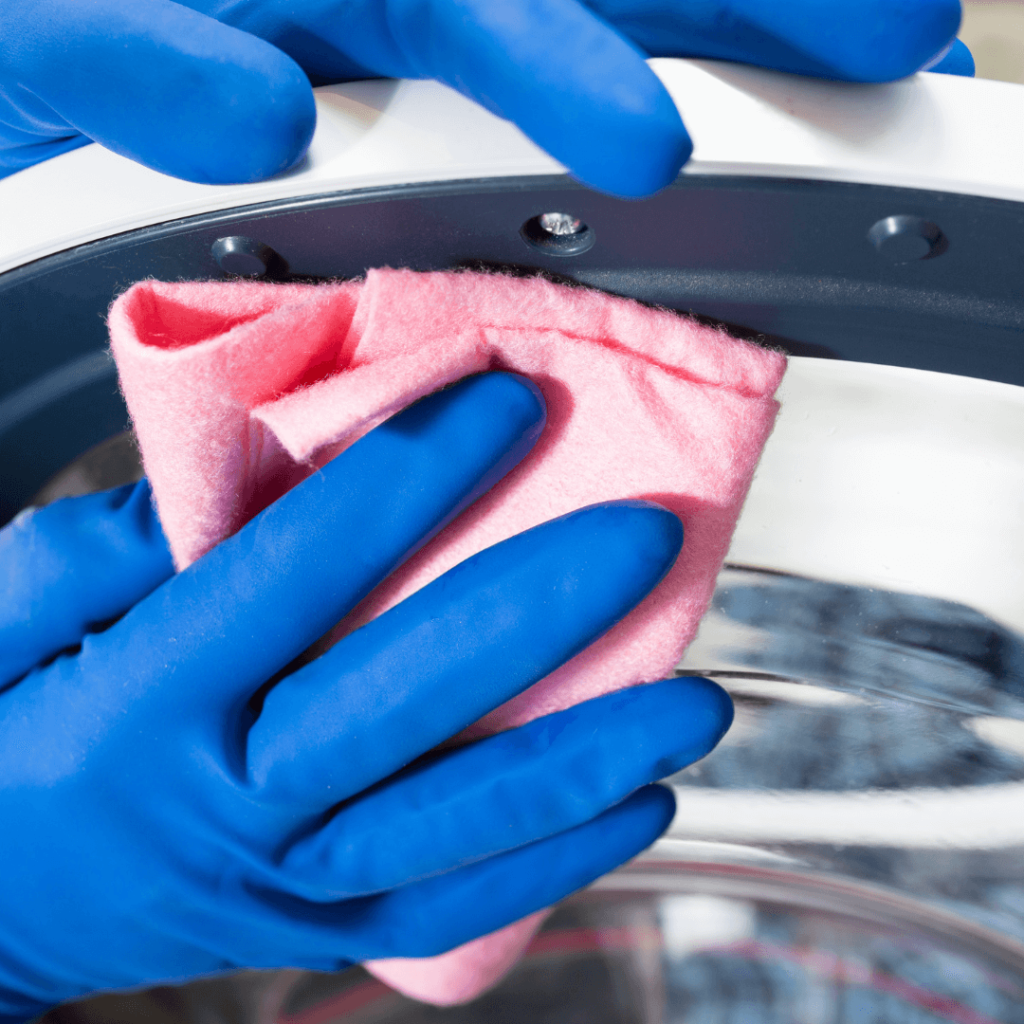
Step 7: Create Good Laundry Habits
Developing good laundry habits can help maintain your front-load washer and improve its efficiency. Here are some tips:
- Leave the Door Open: After each wash, leave the washer door open to allow the drum to air out and prevent mold and mildew growth.
- Use the Right Detergent: Always use HE (high-efficiency) detergent in your front-load washer to prevent excess suds and residue buildup. Know more about HE detergent.
- Measure Detergent Properly: Avoid using too much detergent. Follow the manufacturer’s recommendations for the correct amount.
- Clean Up Spills Immediately: If you spill detergent or fabric softener on the washer, wipe it up immediately to prevent buildup.
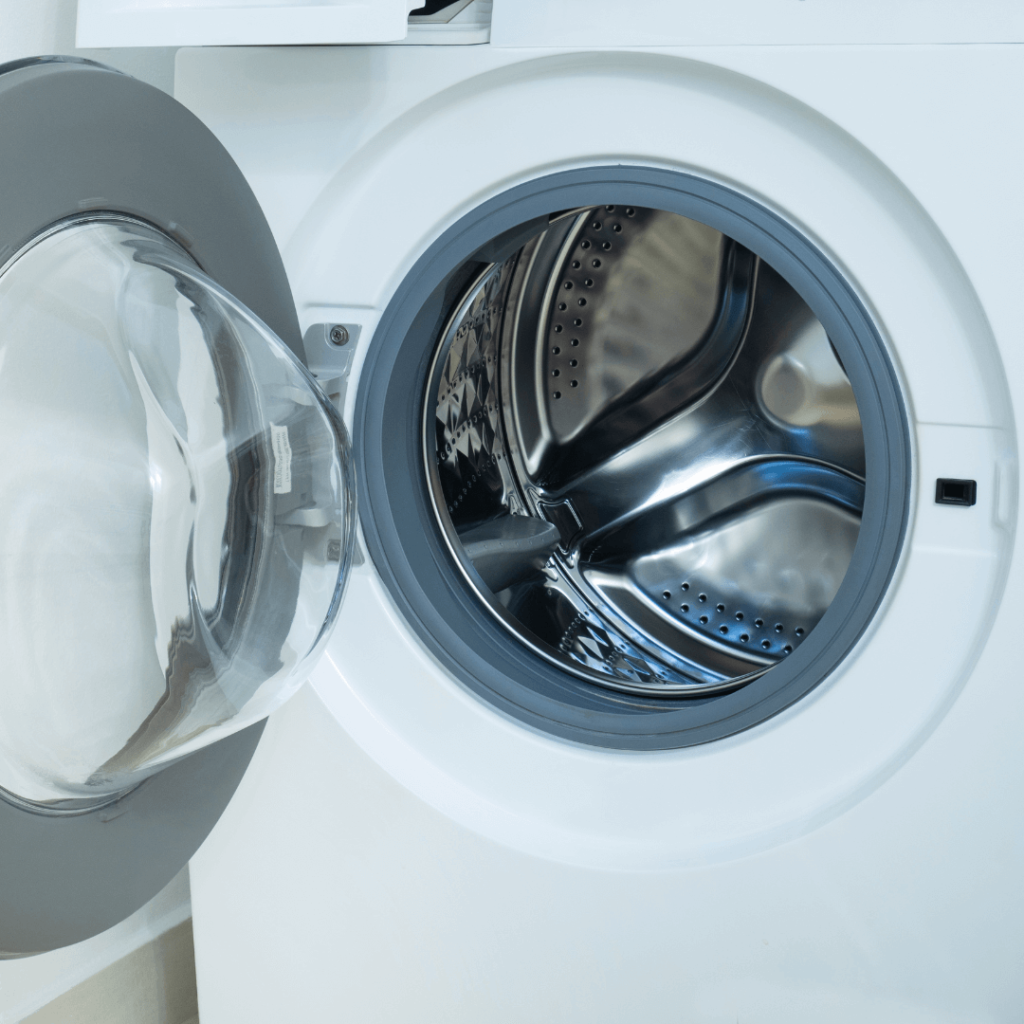
Step 8: Regular Inspections
Performing regular inspections helps you catch potential issues early. Here’s what to look for:
- Check Hoses: Inspect the water hoses for signs of wear, bulging, or leaks. Replace them if necessary to prevent water damage.
- Look for Leaks: Regularly check around the washer for any signs of water leaks. Address leaks promptly to avoid damage.
- Monitor Performance: Pay attention to any unusual noises, vibrations, or performance issues. If you notice anything out of the ordinary, investigate and address the problem.
Common Problems and Troubleshooting
Even with regular maintenance, you might encounter some common issues with your front-load washer. Here are a few and how to troubleshoot them:
- Washer Not Draining:
- Check the Filter: A clogged filter can prevent the washer from draining. Clean the filter as described in Step 4.
- Inspect the Drain Hose: Make sure the drain hose is not kinked or blocked.
- Washer Smells Bad:
- Washer Is Noisy:
- Balance the Load: Make sure the washer is not overloaded or unbalanced. Adjust the load if necessary.
- Check for Foreign Objects: Inspect the drum and filter for any objects that might be causing noise.
- Washer Vibrates Excessively:
- Level the Washer: Ensure your washer is level on the floor. Adjust the feet if necessary.
- Check the Load: Make sure the load is balanced and not too heavy.
When to Call a Professional?
While many maintenance tasks can be done yourself, some issues require professional attention. Here are a few scenarios when it’s best to call a professional:
- Persistent Leaks: If you’ve checked the hoses and filter and still have leaks, a professional can diagnose and fix the problem.
- Electrical Issues: If your washer won’t turn on or you suspect electrical problems, call a professional to avoid the risk of injury.
- Strange Noises: If you hear grinding or other unusual noises that you can’t identify, it’s best to have a professional inspect your washer.
Conclusion
Maintaining your front-load washer doesn’t have to be a daunting task. With these easy, DIY maintenance steps, you can keep your washer running smoothly, prevent common issues, and extend its lifespan. Remember to perform regular inspections, clean the key components, and develop good laundry habits. By taking a little time to care for your washer, you’ll ensure it continues to provide efficient, reliable service for years to come.
For more washing machine problems, read our blog.
You May Also Like
- How to Choose the Right Refrigerator Size for Your Home?
- Why Is My Washing Machine Not Draining Water?
- Why You Should Deep Clean Your Washer Dryer Once a Year?
- Inverter or Non-Inverter Air Conditioner: Which To Buy?
- What is the Right Air Conditioner Horsepower for Your Home?
- 5 Tips to Buy an Air Conditioner in Malaysia







